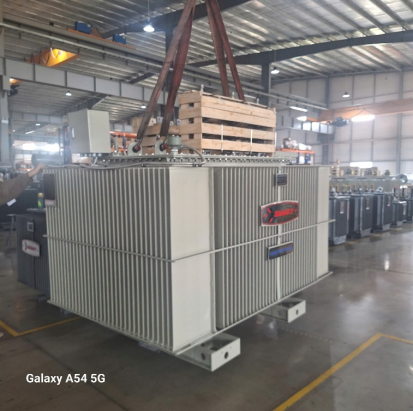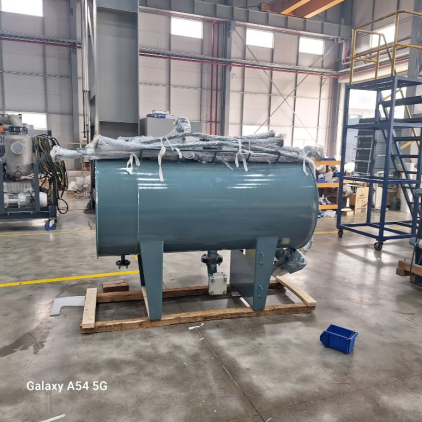The Importance of Transformers in Modern Life
Transformers, often referred to as the unsung heroes of the electrical world, play an indispensable role in powering our homes, industries, and technological advancements. These devices are critical to the efficient transmission and distribution of electricity, ensuring that energy reaches us safely and reliably. From enabling long-distance power transmission to supporting renewable energy integration, transformers are at the heart of modern infrastructure. In this article, we’ll explore why transformers are so vital, how they work, and their impact on daily life and the global economy.

What Are Transformers and How Do They Work?
At its core, a transformer is an electrical device designed to transfer electrical energy between circuits while changing voltage levels. It operates on the principle of electromagnetic induction, discovered by Michael Faraday in the 19th century. A transformer consists of two main coils of wire—known as the primary and secondary windings—wrapped around a magnetic core. When alternating current (AC) flows through the primary coil, it generates a magnetic field that induces a voltage in the secondary coil, either stepping up (increasing) or stepping down (decreasing) the voltage based on the number of windings.
This ability to adjust voltage levels is what makes transformers essential. High-voltage electricity is ideal for long-distance transmission because it reduces energy loss, while low-voltage power is safer and more practical for household use. Transformers bridge this gap, ensuring electricity is both efficiently transported and safely delivered.
Why Transformers Are Crucial for Power Distribution
One of the most significant contributions of transformers is their role in electrical power distribution. Electricity generated at power plants—whether from coal, natural gas, hydroelectric dams, or renewable sources like wind and solar—often starts at a relatively low voltage. To transmit this energy over vast distances without significant losses, the voltage must be increased. Step-up transformers perform this task, raising the voltage to hundreds of thousands of volts for transmission across power lines.
Once the electricity reaches its destination—cities, towns, or industrial zones—step-down transformers reduce the voltage to levels suitable for homes (typically 120V or 240V, depending on the region) and businesses. Without transformers, the energy loss during transmission would be so high that powering distant areas would be impractical, leaving rural communities and industries disconnected from the grid.

Supporting Renewable Energy and Sustainability
As the world shifts toward cleaner energy sources, transformers have become even more critical. Renewable energy systems, such as solar panels and wind turbines, produce electricity at varying voltages and often in direct current (DC) form. Transformers, paired with inverters, convert this energy into usable AC power and adjust voltage levels for integration into the grid. This adaptability ensures that green energy can be transmitted efficiently from remote wind farms or solar installations to urban centers.
Moreover, transformers help balance the intermittent nature of renewable energy. For instance, when solar panels generate excess power during sunny hours, transformers facilitate the distribution of this surplus to areas of need or to energy storage systems. By enabling the widespread adoption of renewables, transformers contribute to reducing carbon emissions and combating climate change.
Transformers in Industry and Technology
Beyond power distribution, transformers are vital in industrial and technological applications. Heavy machinery, manufacturing plants, and data centers all rely on stable, precisely controlled electrical power. Industrial transformers provide the specific voltage levels required for equipment, ensuring operational efficiency and preventing damage from power surges or fluctuations.
In the tech world, transformers power the infrastructure behind the internet. Data centers, which house servers for cloud computing, streaming services, and AI systems, depend on transformers to deliver consistent electricity. Without them, the digital economy—from e-commerce to social media—would grind to a halt. Even small electronic devices, like phone chargers, use tiny transformers to convert household voltage into the low levels needed for safe operation.
Enhancing Safety and Reliability
Safety is another key reason transformers are indispensable. High-voltage electricity, while efficient for transmission, is dangerous for direct use. Transformers step down this voltage to safer levels, protecting people and property. Additionally, modern transformers are equipped with features like insulation, cooling systems, and overload protection to prevent failures, fires, or explosions.
Reliability is equally important. Power outages can disrupt daily life, halt production, and even endanger lives in critical settings like hospitals. Transformers, when properly maintained, ensure a steady supply of electricity, minimizing disruptions and supporting the stability of the grid.
Economic Impact of Transformers
The economic significance of transformers cannot be overstated. By enabling efficient power transmission, they reduce energy costs for utilities and consumers alike. Industries benefit from lower operational expenses, while governments save on infrastructure investments by avoiding the need for excessive power plants near every population center. The transformer manufacturing industry itself is a major economic driver, creating jobs and fostering innovation in electrical engineering.
Furthermore, transformers support economic growth by powering development in emerging markets. As countries electrify rural areas and expand industrial capabilities, transformers make it possible to deliver electricity where it’s needed most, lifting communities out of poverty and driving progress.
Challenges and the Future of Transformers
Despite their importance, transformers face challenges. Aging infrastructure in many regions leads to inefficiencies and breakdowns, while the rising demand for electricity strains existing systems. Additionally, extreme weather events, exacerbated by climate change, can damage transformers and disrupt power supply.
The future, however, looks promising. Advances in transformer technology—such as smart transformers with real-time monitoring capabilities—are improving efficiency and resilience. These “intelligent” devices can detect issues before they escalate, reducing maintenance costs and downtime. Additionally, the push for eco-friendly materials and designs is making transformers more sustainable, aligning with global environmental goals.
Conclusion
Transformers are the backbone of our electrical world, silently ensuring that power flows seamlessly from generation to consumption. Their ability to adjust voltage levels enables efficient energy transmission, supports renewable energy adoption, and powers industries and homes alike. Beyond their technical role, transformers enhance safety, reliability, and economic growth, making them a cornerstone of modern civilization.
As we move toward a more electrified and sustainable future, the importance of transformers will only grow. Investing in their development, maintenance, and innovation is not just a matter of convenience—it’s a necessity for progress. Whether you’re charging your phone, running a factory, or harnessing solar power, transformers are working behind the scenes to keep the world energized.
------------------------------------------------------------------------------------------------------------------
SANAKY VIETNAM., CO LTD - Manufacturer of Chest Freezer - Upright Cooler, Transformer, RO Water Purifier...
☎ Hotline: (+84) 986 137 323
? ella@sanaky-vn.com
? www.sanaky-vn.com
 Vietnamese
Vietnamese  English
English  Chinese
Chinese  French
French  Spanish
Spanish  Russian
Russian  Arabic
Arabic  Portuguese
Portuguese